Mark Sisson's Blog, page 193
February 6, 2017
Dear Mark: Steak Satiety vs Ground Beef Satiety; Maca and Cacao During Fasts; Nut Butters, and Post-work Workouts
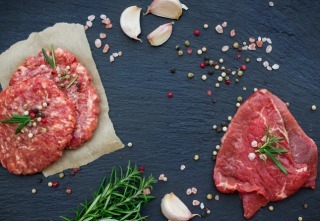 For today’s edition of Dear Mark, I’m answering four questions from readers. First, why might a pound of ground beef induce less satiation than a pound of steak? Second, can you take maca root and cacao powder during a fast without breaking it? Third, what’s my take on nut butters? Good kitchen allies or too much of a good thing—or both? And finally, I give a few tips for someone who wants to train more regularly but can’t find the energy required after work.
For today’s edition of Dear Mark, I’m answering four questions from readers. First, why might a pound of ground beef induce less satiation than a pound of steak? Second, can you take maca root and cacao powder during a fast without breaking it? Third, what’s my take on nut butters? Good kitchen allies or too much of a good thing—or both? And finally, I give a few tips for someone who wants to train more regularly but can’t find the energy required after work.
Let’s go:
Hi Mark,
Is there a reason for there to be different satiety from whole cuts of meat vs ground meat? I notice for me ground meat is a lot less satiating. I eat two meals a day. If breakfast is a pound of steak, I’m good until later in the afternoon. However if breakfast instead involves a pound of ground beef, I’m usually ravenous again just a few hours later.
Thanks,
-Andrew
I can think of three reasons. They are not mutually exclusive. All three could be, and likely are, correct.
Ground meat travels fast. Like other types of processed food, pre-processed/ground beef spends less time in transit in the gut. It speeds on through. A common treatment for people with gastroparesis (characterized by severely slow transit time) is choosing pureed meat over chunks of it because it speeds up transit. Ground beef should function similarly.
You have to chew steak. And since you don’t have to chew ground beef as long (until it forms an amorphous mass of amino acids), you miss an important aspect of the eating ritual that informs appetite. Chewing primes our body to expect food. It tells our body we’re actually eating something. It causes the secretion of digestive enzymes, so we can actually digest and absorb the nutrients we consume.
Your steak might be higher in protein than your ground beef, and protein is the most satiating macronutrient. Ground beef is often much higher in fat and lower in protein than steak. That’s not a bad thing, but it might not help induce as much satiety.
Been playing a bit with intermittent fasting and drinking bulletproof coffee in the morning. If I add supplements such as maca or cacao powder does that counteract the effects of consuming only fat for breakfast and will it throw me out of ketosis?
Nope, shouldn’t be a problem. Both have negligible amounts of carbs, with the bulk of cacao’s coming as fiber.
The cacao especially will only enhance your fast by increasing AMPK and improving mitochondrial function. You’ll recall that one of the primary benefits of fasting—and the thing responsible for many of its benefits—is the induction of AMPK activation.
What’s your view on nut butters pertaining to attempting to “reboot” one’s view towards food?
They can be nutrient dense, full of healthy fat soluble nutrients, and filling. But they can also displace other meals. And can be addictive.
Grok certainly didn’t have access to a jar of almond butter…..
Psychologically, nut butters seem to invite cheat meals. And train your brain to expect a certain level of taste. By simple nature that they are easy to eat and can be combined with other foods (ie: fruits) in ways that really overstimulate the senses (are almost too delicious for their profile). Something that should be reserved for standard american diet desserts.
Thoughts?
I share your concerns. I’m not super enthusiastic about nut butters, especially if you already find them addicting. I’ve seen too many people derail their progress by repeatedly plunging a greasy spoon into a jar of concentrated nut slurry. It’s way too easy to add 600 or 700 calories in a day just from “random” spoonfuls.
That said, they are nutrient-dense, they do go great on sliced apples and bananas, you can incorporate them into your cooking, you can use them to make incredible dipping sauces. Sounds like you’re a big fan, which is why you might want to lay off them for awhile.
Hi Mark, how do you motivate yourself to get out and exercise after getting home from work exhausted and all you feel like doing is curling up and sleeping? I know 90% of the time I will feel better for moving but when exhaustion hits it is oh so hard to physically follow through on what my mind knows will benefit me. Thanks.
I don’t. I’m serious. I very rarely, if ever, try to motivate myself to train after a long day working. I use those times to rest, hang out with my family, make dinner, read, and generally keep things very mellow. That post-work workout is fool’s gold. It’s so tempting, so inviting, so within reach—yet most people fail at it.
You’re at your most vulnerable at the end of the day, far more likely to give into the junk food waiting just a pantry door away. Moreover, consistently telling yourself that “this’ll be the day” you start training after work and consistently failing to follow through will establish a terrible relationship between you and exercise. Don’t feel wedded to the idea of a post-work workout (if a nighttime workout happens, it happens) if you have better options. Instead:
Wake up 30 minutes earlier to train. If you try this, don’t accrue any sleep debt. Go to bed 30 minutes before you normally would.
Make your mornings more efficient so you have enough free time to add a workout. Instead of deciding what to wear in the morning, decide the night before and lay the clothing out. Instead of spending ten minutes conducting an internal debate about how you should cook your eggs, you can decide the night before—and maybe have them hardboiled and ready to go.
Train at lunch. I like a midday session. Strength is highest then, and after I get the workout in, I’m happy, I feel great, and my productivity skyrockets. The workout is “done” for the day! An afternoon training session leaves me feeling optimistic about the rest of the day.
Play. Exercise doesn’t have to be grueling work under the bar or on the spin bike. It can be fun. It can take the form of play—aimless movement without a goal in sight. You’re probably more willing to play after work than submit to a regimented bout in the gym.
Or some/all of the above. A few brief spells of activity might feel more doable than one continuous session. That works, too.
That’s it for today, folks. Thanks for reading, and take care!
Oh, and help out today’s round of questioners with your own answers down below!
The post Dear Mark: Steak Satiety vs Ground Beef Satiety; Maca and Cacao During Fasts; Nut Butters, and Post-work Workouts appeared first on Mark's Daily Apple.



The Nominations Are In! Now It’s Your Vote…
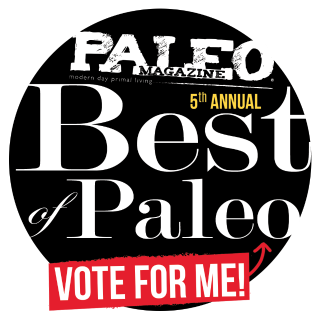 The Paleo Magazine “Best of 2016” nominations are in! Thank you to all who supported MDA, Primal Blueprint, Primal Kitchen and Primal Publishing by contributing. We’re contenders for eight categories in total—and now it’s time for you to choose the final winners!
The Paleo Magazine “Best of 2016” nominations are in! Thank you to all who supported MDA, Primal Blueprint, Primal Kitchen and Primal Publishing by contributing. We’re contenders for eight categories in total—and now it’s time for you to choose the final winners!
Voting is already underway and ends February 15th. Paleo Magazine is also offering a special subscription discount to everyone who votes. Simply fill out the form, and you’ll get your promo code after you submit your choices.
As they say, vote early and often because each vote counts! Here are the categories we’re nominated for….
Best Blog (General Health/Wellness): Mark’s Daily Apple
Best Blog (Science): Mark’s Daily Apple
Best New Book (General Health/Wellness): The New Primal Blueprint by Mark Sisson
Best New Book (Science): The Paleo Thyroid Solution by Elle Russ
Best New Book (Fitness): Primal Endurance by Mark Sisson
Best Paleo Company (Food): PRIMAL KITCHEN™
Best Paleo Bar (Nut Based): PRIMAL KITCHEN™ Bars
Best Paleo Hiking Grub: PRIMAL KITCHEN™ Collagen Bars
Every year it’s a privilege to be nominated by you, the Mark’s Daily Apple community, and I appreciate your votes for the websites, books and products that mean the most for your Primal journeys.
Thanks, everybody! And Grok on!

The post The Nominations Are In! Now It’s Your Vote… appeared first on Mark's Daily Apple.



February 5, 2017
Weekend Link Love – Edition 438
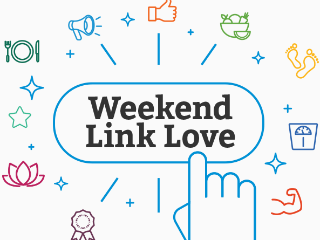 RESEARCH OF THE WEEK
RESEARCH OF THE WEEKGetting the flu vaccine during pregnancy doesn’t seem to reduce autism risk in your offspring.
Dogs lose weight on low-carb diets, too.
Over 700 genes determine height.
Certain microbes could promote altruism.
Fixing your posture curbs depression symptoms.
NEW PRIMAL BLUEPRINT PODCASTS
Episode 154: Drew Canole: Elle Russ chats with Drew Canole, health expert and founder of Organifi, one of the best-tasting and most nutrient-dense green powders on the market.
Each week, select Mark’s Daily Apple blog posts are prepared as Primal Blueprint Podcasts. Need to catch up on reading, but don’t have the time? Prefer to listen to articles while on the go? Check out the new blog post podcasts below, and subscribe to the Primal Blueprint Podcast here so you never miss an episode.
What’s Wrong with the “Best Diets”?
Where Do I Start? The Big Picture on Tackling Primal Challenges
14 Primal Tips for Better Hiking
INTERESTING BLOG POSTS
The upsides and downsides of interpersonal synchrony.
How the length of your thigh bone determines the best squat technique.
Alcohol probably made civilization possible (or tolerable).
What makes the Instant Pot so great?
We still don’t know when humans learned to start and control fires (and the Neanderthals might never have learned).
MEDIA, SCHMEDIA
Malaria-bearing mosquitoes are getting craftier.
“You get used to eating packets of butter.”
People really need to stop eating vegetable oil.
EVERYTHING ELSE
Now this is a use for soybean oil I can get behind.
Feral pigs are doing great.
What happens when one twin goes to space for a year and one twin stays planetside.
The Danish Medical Association comes out hard against male circumcision.
For the first time, malaria drugs failed in the UK.
The nominations are in for Paleo Magazine‘s “Best of 2016.” We made 8 categories.
Best Blog (General Health/Wellness): Mark’s Daily Apple
Best Blog (Science): Mark’s Daily Apple
Best New Book (General Health/Wellness): The New Primal Blueprint by Mark Sisson
Best New Book (Science): The Paleo Thyroid Solution by Elle Russ
Best New Book (Fitness): Primal Endurance by Mark Sisson
Best Paleo Company (Food): PRIMAL KITCHEN™
Best Paleo Bar (Nut Based): PRIMAL KITCHEN™ Bars
Best Paleo Hiking Grub: PRIMAL KITCHEN™ Collagen Bars
All of us here at MDA and Primal Kitchen would really appreciate your vote.
THINGS I’M UP TO AND INTERESTED IN
Article I appeared in: The health secrets of 10 top entrepreneurs.
Podcast I loved appearing on: Mixergy, discussing how I grew my business from a scrappy blog to what it is today. Give it a listen (and a like, if you do).
Video I have to share: Watch people mustering the nerve to jump from the high dive.
News I liked: Roundup’s getting cancer warnings on its labels, at least in CA.
Pet I’d get: This hairless hare, if only for the sage wisdom he undoubtedly possesses.
RECIPE CORNER
Hate liver? Bacon beef liver paté will make you a believer.
Bolognese with sweet potato “noodles.”
TIME CAPSULE
One year ago (Feb 5 – Feb 11)
10 Reasons to Eat More Collagen – Why you need more gelatin in your life.
Nootropics: Brain Enhancers, Smart Drugs, or Empty Hype? – Can certain compounds make your brain work good?
COMMENT OF THE WEEK
“I would put the US News article firmly in the fake news category.”
– I tend to agree, Jim Tipton.

The post Weekend Link Love – Edition 438 appeared first on Mark's Daily Apple.



February 4, 2017
Mississippi Roast
 If you’ve ever perused Pinterest for recipes, you probably know about Mississippi Roast. A mouth-watering Internet sensation, Mississippi Roast is made by cooking chuck roast in a slow cooker with a stick of butter, powdered ranch dressing, powdered gravy or onion mix, and pepperoncini. Fans write about Mississippi Roast as if it’s the best thing they’ve ever eaten. If you’ve been salivating over Mississippi Roast, but haven’t tried it due to the long list of artificial ingredients in powdered mixes like ranch dressing, this is your lucky day.
If you’ve ever perused Pinterest for recipes, you probably know about Mississippi Roast. A mouth-watering Internet sensation, Mississippi Roast is made by cooking chuck roast in a slow cooker with a stick of butter, powdered ranch dressing, powdered gravy or onion mix, and pepperoncini. Fans write about Mississippi Roast as if it’s the best thing they’ve ever eaten. If you’ve been salivating over Mississippi Roast, but haven’t tried it due to the long list of artificial ingredients in powdered mixes like ranch dressing, this is your lucky day.
Mississippi Roast, meet PRIMAL KITCHEN™ Ranch Dressing. PRIMAL KITCHEN™’s all-natural ranch transforms Mississippi Roast into a healthy, wholesome meal with no artificial or questionable ingredients. The dressing flavors the meat and creates a tangy, incredibly rich sauce with hints of dill and chive.
Simply put the meat in the slow cooker, sprinkle in some pepperoncini, pour the dressing on top, and you’re good to go. This is Mississippi Roast as it should always be eaten.
Servings: 6
Time in the Kitchen: 5 minutes to put ingredients in slow cooker, plus 6 to 8 hours cooking time
Ingredients

1 boneless chuck roast, 3 to 4 pounds (1.4 kg to 1.8 kg)
1 teaspoon kosher salt (5 ml)
1/2 teaspoon ground black pepper (2.5 ml)
1 tablespoon butter, cut into small cubes (15 g)
8 whole pepperoncini or 1 cup/150 g chopped pepperoncini
1 bottle (8 fl oz) PRIMAL KITCHEN™ Ranch Dressing (237 ml)
Instructions
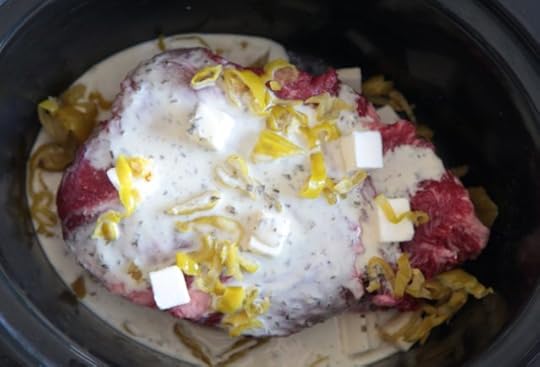
Rub the salt and pepper all over the roast.
Place the roast in a slow cooker set on low. Scatter butter cubes on top of the roast. Scatter pepperoncini on and around the roast. Pour PRIMAL KITCHEN™ Ranch Dressing over the roast. Cook 6 to 8 hours, until the meat pulls apart easily with a fork.
Slice or shred the meat. Pour the sauce in the slow cooker on top of the meat. (If the sauce has separated and seems oily, whisk the sauce in a bowl before pouring over the meat. If the sauce seems too runny, pour into a saucepan and simmer 10 to 20 minutes to reduce and thicken).
If desired, serve the roast with more pepperoncini, plus fresh dill or chives.
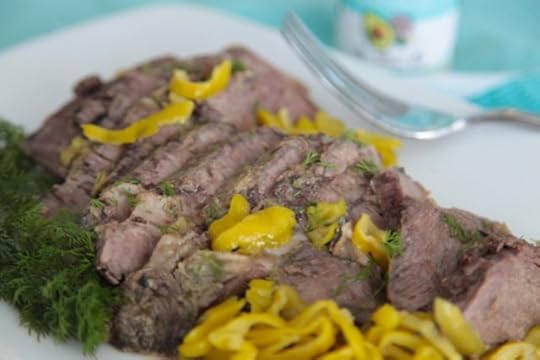

The post Mississippi Roast appeared first on Mark's Daily Apple.



February 3, 2017
After So Many Diets, This Is a Lifestyle I Can Maintain Forever!
It’s Friday, everyone! And that means another Primal Blueprint Real Life Story from a Mark’s Daily Apple reader. If you have your own success story and would like to share it with me and the Mark’s Daily Apple community please contact me here. In fact, I have a contest going right now. So if you have a story to share, no matter how big or how small, you’ll be in the running to win a big prize. Read more here.
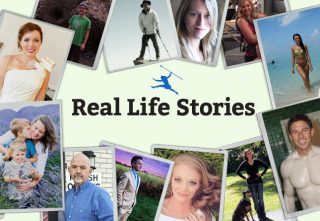 As a 40-something woman, I’ve tried a lot of diets over nearly 30 years. And quite a few exercise programs, too. I’ve gained and lost 20 pounds multiple times. I was pretty good at losing weight once I put my mind to it – but the changes never stuck, old habits creeped back in, and the weight came back.
As a 40-something woman, I’ve tried a lot of diets over nearly 30 years. And quite a few exercise programs, too. I’ve gained and lost 20 pounds multiple times. I was pretty good at losing weight once I put my mind to it – but the changes never stuck, old habits creeped back in, and the weight came back.
In 2006, I was feeling heavy, lethargic and desperate to lose weight once again. The South Beach Diet had been all the rage for a couple of years, and I decided to try it. I lost 30 pounds, and this was the first time in occurred to me that a lower carb diet might be better for my body. I wasn’t so good at the maintenance phase, however – a piece of whole wheat bread on occasion became a regular part of my diet. I restarted my love affair with chocolate ice cream, and the pounds gradually returned with several years of bouncing around on the scale.
In 2012 I began to have gastrointestinal health issues – I lost about 20 pounds, but not in a good way. After many months of doctor’s visits and tests I was diagnosed with a form of colitis. In looking on the Internet for guidance how to heal myself, I found Mark’s website. I devoured the information on his site and read his book, The Primal Blueprint. As a scientist, the technical explanations of how our bodies weren’t adapted to newer (on the evolutionary scale) foods like wheat made a lot of sense to me. I started gradually improving my diet, and I do mean gradually, over the next couple of years but with multiple stops and starts depending what was happening in life.
In late 2014, I took the next step and consulted a naturopath for additional help. Testing showed that I had an intolerance for wheat and oats -knowing that what you’re eating is actually harming your health is a big wake-up call. The testing also showed that I was pre-diabetic – also a huge wake-up call. I started reading books on the dangers of wheat to our health – Wheat Belly, by William Davis, MD, and Grain Brain, by David Perlmutter, MD. Armed with this additional information, it became clear that my beloved bread could no longer fit in my diet. I got serious about the Primal lifestyle – no wheat, no processed foods, minimal sugar, etc. In my household we now eat meats, eggs, fish, and plenty of vegetables! It took some time, but eventually my body became fat adapted and the weight began dropping off. No feelings of deprivation, just a sense that what I was eating is good for my body.
The results? I’ve lost over 40 pounds and feel amazing. My colitis is under control-eating whole foods that nourish my body has made a huge difference. My blood sugar level is normal. I’m more active, exercising in a manner that is energizing rather than depleting. After so many years of trying diets, this is a lifestyle that I can maintain forever.
Having seen what a Primal diet and lifestyle can do for one’s health, in 2016 I completed The Primal Health Coach certification to teach others why this lifestyle works and to support clients who want to change their lives for the better. I also blog and provide healthy living tips on my website, theprimalhealthcoach.com.
I am so grateful to Mark for showing the way to good health-it has made a huge difference in my life.
The post After So Many Diets, This Is a Lifestyle I Can Maintain Forever! appeared first on Mark's Daily Apple.



After so many diets, this is a lifestyle I can maintain forever!
It’s Friday, everyone! And that means another Primal Blueprint Real Life Story from a Mark’s Daily Apple reader. If you have your own success story and would like to share it with me and the Mark’s Daily Apple community please contact me here. In fact, I have a contest going right now. So if you have a story to share, no matter how big or how small, you’ll be in the running to win a big prize. Read more here.
 As a 40-something woman, I’ve tried a lot of diets over nearly 30 years. And quite a few exercise programs, too. I’ve gained and lost 20 pounds multiple times. I was pretty good at losing weight once I put my mind to it – but the changes never stuck, old habits creeped back in, and the weight came back.
As a 40-something woman, I’ve tried a lot of diets over nearly 30 years. And quite a few exercise programs, too. I’ve gained and lost 20 pounds multiple times. I was pretty good at losing weight once I put my mind to it – but the changes never stuck, old habits creeped back in, and the weight came back.
In 2006, I was feeling heavy, lethargic and desperate to lose weight once again. The South Beach Diet had been all the rage for a couple of years, and I decided to try it. I lost 30 pounds, and this was the first time in occurred to me that a lower carb diet might be better for my body. I wasn’t so good at the maintenance phase, however – a piece of whole wheat bread on occasion became a regular part of my diet. I restarted my love affair with chocolate ice cream, and the pounds gradually returned with several years of bouncing around on the scale.
In 2012 I began to have gastrointestinal health issues – I lost about 20 pounds, but not in a good way. After many months of doctor’s visits and tests I was diagnosed with a form of colitis. In looking on the Internet for guidance how to heal myself, I found Mark’s website. I devoured the information on his site and read his book, The Primal Blueprint. As a scientist, the technical explanations of how our bodies weren’t adapted to newer (on the evolutionary scale) foods like wheat made a lot of sense to me. I started gradually improving my diet, and I do mean gradually, over the next couple of years but with multiple stops and starts depending what was happening in life.
In late 2014, I took the next step and consulted a naturopath for additional help. Testing showed that I had an intolerance for wheat and oats -knowing that what you’re eating is actually harming your health is a big wake-up call. The testing also showed that I was pre-diabetic – also a huge wake-up call. I started reading books on the dangers of wheat to our health – Wheat Belly, by William Davis, MD, and Grain Brain, by David Perlmutter, MD. Armed with this additional information, it became clear that my beloved bread could no longer fit in my diet. I got serious about the Primal lifestyle – no wheat, no processed foods, minimal sugar, etc. In my household we now eat meats, eggs, fish, and plenty of vegetables! It took some time, but eventually my body became fat adapted and the weight began dropping off. No feelings of deprivation, just a sense that what I was eating is good for my body.
The results? I’ve lost over 40 pounds and feel amazing. My colitis is under control-eating whole foods that nourish my body has made a huge difference. My blood sugar level is normal. I’m more active, exercising in a manner that is energizing rather than depleting. After so many years of trying diets, this is a lifestyle that I can maintain forever.
Having seen what a Primal diet and lifestyle can do for one’s health, in 2016 I completed The Primal Health Coach certification to teach others why this lifestyle works and to support clients who want to change their lives for the better. I also blog and provide healthy living tips on my website, theprimalhealthcoach.com.
I am so grateful to Mark for showing the way to good health-it has made a huge difference in my life.
The post After so many diets, this is a lifestyle I can maintain forever! appeared first on Mark's Daily Apple.



February 2, 2017
What’s Wrong with the “Best Diets”?
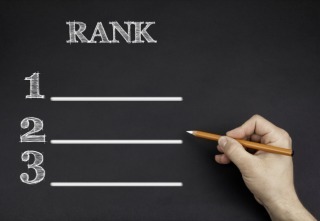 Every year, it’s the same thing: U.S. News and World Report ranks 38 of the most popular diets from best to worst. And every single time, the paleo diet—or some variant, in this case the Whole30 plan—comes in dead last. I’ve written about this before. You know my stance. You know how silly the whole thing is, and why you shouldn’t care about a ranking, especially when you’ve transformed your health eating the “worst diet in the world.”
Every year, it’s the same thing: U.S. News and World Report ranks 38 of the most popular diets from best to worst. And every single time, the paleo diet—or some variant, in this case the Whole30 plan—comes in dead last. I’ve written about this before. You know my stance. You know how silly the whole thing is, and why you shouldn’t care about a ranking, especially when you’ve transformed your health eating the “worst diet in the world.”
Frankly, I’m skeptical these reports have much impact anymore.
But I got another barrage of emails about the rankings, so I’m going to address them. Instead of defending ancestral eating, which I’ve already done plenty of times before, I’ll scrutinize the two so-called “best diets.” The pair that wallop paleo and Whole30. The ones you’d apparently be fools not to adopt.
The most ironic part of all this is their descriptions of the “best diets” have the least citations supporting their ranking. In bashing paleo, they had to acknowledge five studies and clinical trials that found the diet works, inserting weasel words like “one tiny study” and parentheticals like “even the scientists called their study ‘underpowered'” to diminish the impact. To boot, several of the studies show that paleo compares favorably to the Mediterranean diet (number 2 overall) and DASH diet (number 1 overall).
The DASH diet
DASH stands for dietary approaches to stop hypertension, and that’s exactly what it sets out to do: reduce blood pressure. It does this by reducing sodium and increasing intake of foods high in potassium, calcium, fiber, and protein.
As U.S. News and World Reports puts it, “just emphasize the foods you’ve always been told to eat,” like lean protein, low-fat dairy, fruits, veggies, and whole grains. Isn’t that what people have been trying to do for the last 60 years amid our growing and seemingly unending obesity epidemic?
You could do worse, if you can actually stick to a low-flavor (no salt?) diet like that. But you’d do a lot better if you did high-fat dairy, meat both fat and lean, and other sources of carbs besides whole grains without missing anything. Sounds familiar somehow.
They even did a study looking at this. Patients were randomized to eat either a high-fat DASH diet or a low-fat DASH diet. Both versions improved hypertension, but only the high-fat DASH diet improved triglycerides, increased LDL particle size (which, all else being equal, means reduced particle number), and lowered VLDL.
The Mediterranean diet
I have no beef with the Mediterranean diet, except having to type “Mediterranean” over and over again. Is it two Rs, two Ns? I never remember.
Mediterranean diets emphasize monounsaturated fats from olive oil and nuts, seafood, cheese, vegetables, legumes, red wine, low-fat dairy, and whole grains. Except for the last two, it’s quite familiar. It’s not explicitly low-fat, and is usually higher-fat than most conventional diet plans.
You wouldn’t know it from the ranking report, but there’s something called the low-carb or ketogenic Mediterranean diet. To make a Mediterranean diet low-carb or ketogenic, you ditch the grains and legumes and increase the seafood, olive oil, and veggies. And guess what? It works really well. Low-carb Mediterranean diets consistently outperform higher-carb Mediterranean diets, improving fatty liver, treating metabolic syndrome, increasing weight loss without damaging blood lipids, and dropping waist circumference.
Anyway, it’s a decent way to eat. But it’s a better way to live. And that’s the thing: the importance of lifestyle, exercise, and community is baked into the Primal Blueprint. Half the articles on here have nothing to do with diet at all. Meanwhile, popular advice about the Mediterranean “diet” focuses on the whole grains and the olive oil and the beans and the supposed lack of red meat, yet totally ignores everything else that makes the Mediterranean home to a disproportionate number of centenarians:
Periodic fasting: A major religion in the region, Orthodox Christianity, prescribes regular fasting. Some researchers even consider Orthodox fasting an integral part of the classic Cretan diet.
Low stress: One study even examined the effects of Mediterranean eating in the context of high stress, finding stressed-out women had negative metabolic responses to a Mediterranean meal.
Socializing: They’re not cramming food in front of the television or on the commute. They’re sitting down to a leisurely meal with friends and family. They’re savoring the food and enjoying the company.
Physical activity: Zorba the Crossfitter? No. Constant low-level physical activity is the norm, though.
U.S. News and World Reports say almost nothing about the various lifestyle components integral to the real Mediterranean diet, though they do recommend Jazzercise.
If you read the reviews of each diet closely, it sounds quite positive. Both diets emphasize whole foods. Both diets are “hard to follow,” just like paleo and Whole30. It’s difficult to eat out on DASH and Mediterranean and paleo/Whole30, according to the report. They both promote satiety and weight loss; so does paleo. I’m just reporting back what U.S. News said, mind you. I’m not extrapolating. If you took away the number rankings, it actually sounds like they’re fans of paleo eating.
There’s nothing horribly amiss with the DASH diet or the Mediterranean diet. I just don’t see how they score so high and paleo/Whole30 so low, especially when we see how Mediterranean/DASH diet studies that test more “paleo-esque” versions of the diets get better results than the standard versions themselves. Well, I mean, I do, but you know what I mean.
What do you think, folks? Do paleo and Whole 30 deserve such terrible rankings? Are the rankings justified by the text? Are the Mediterranean and DASH diets clearly superior to everything else? Those of you who have tried other diets, what would your rankings look like?
Thanks for reading. Be well.
The post What’s Wrong with the “Best Diets”? appeared first on Mark's Daily Apple.



February 1, 2017
Where Do I Start? The Big Picture on Tackling Primal Challenges
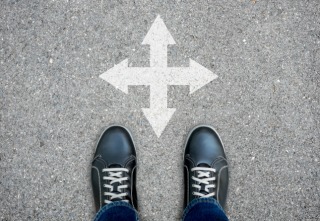 Earlier this month, a reader posed a fantastic question that prompted today’s post. It was long, so I’ll give the choice bits rather than quote the entire thing:
Earlier this month, a reader posed a fantastic question that prompted today’s post. It was long, so I’ll give the choice bits rather than quote the entire thing:
Where do I start? I’d be interested in seeing your opinion on the relative impact of various primal lifestyle changes… Eating “clean” would be a 10, etc… but what about subtler things like sprinting, IF, quality sleep, sunlight, and play… So I guess I’m asking you to write on a 30,000ft level, how all these things interplay and what their relative contributions are to overall wellness.
Where does one start indeed?
Most people familiar with the Primal Blueprint are also familiar with the pecking order within each Primal law. I’m sure the reader is one of them. If you’re not, I’ll give a couple examples.
The foundation of the Primal Blueprint way of eating is:
Eliminating grains, especially gluten grains.
Eliminating processed sugar and excess carbs (carbs you haven’t earned through physical activity/pregnancy/nursing/etc.).
Eliminating processed seed oils high in omega-6 PUFAs.
Do those three things, and you’re most of the way there. You can tinker around the edges, sourcing only grass-fed meat, giving up nightshades for a spell to see how it affects you, forgoing dairy, eating liver once a week, eating lots of colorful fruits and veggies—but doing the first three will usually get you the most benefits. And you’ll probably start doing the other things naturally.
The PB way of training can be boiled down to:
Lift heavy things.
Move frequently at a slow pace (walk, hike, low-level aerobic activity).
Run (or bike/row) really fast once in awhile.
You can try different movement systems, go high-volume/low-intensity or high-intensity/low-volume. You can try CrossFit, or MovNat, or P90x, or strongman, or Olympic lifting. But the basic prescription is the most important.
But is there also a pecking order to heed when choosing which Primal Blueprint lifestyle intervention to tackle first? Should you do diet, exercise, sleep, or any of the others before the rest?
Okay, outlandish scenario time. Guy holding a gun to your head says “Choose one Primal Blueprint lifestyle intervention to enact. Only one.”
What do you choose?
That depends where you’re starting.
For me, it was a tossup between diet and training. The two were inextricably linked. I accumulated a ton of mileage and wear and tear thanks to the gargantuan infusions of grain-based glucose, which allowed me to keep up my excessive training while increasing its inflammatory effects. When I changed, I dropped my training volume and the carbohydrate-based eating style. They begat each other. They both had to go.
After that, my stress resilience improved (less training left more in the tank to deal with life’s trials and lowered my cortisol), and I started sleeping better (fewer late night training sessions and early morning wake-ups, plus not being in “go go go” mode all the time). I suddenly had time to grow my businesses and devote attention to my personal relationships. I began playing more, actually enjoying the physical activity I now had time for. Everything else unfolded once I fixed my training and eating.
Say you only change your diet.
What happens if you adopt a Primal way of eating and start losing body fat but do little else? If you’re overweight or obese, your first step should be changing your diet. Not only will this help you lose body fat and weight, it will lead to improvements in other areas addressed by the PB.
Your sleep gets better. Low-carb diets tend to improve sleep in overweight and obese people.
You suddenly want to exercise. Losing weight also improves energy levels, so you actually feel like exercising. That’s much more effective than forcing a sluggish, overweight body to train when every natural impulse opposes movement. Weight loss also makes higher-impact training like sprints safer.
Avoiding junk food, grains, sugar, and seed oils might not directly reduce stress, but eliminating them eliminates many of the foods we binge on during stressful periods. They’re “off-limits” and thus harder to rationalize eating.
Say you only fix your sleep.
You get natural light during the day, avoid artificial after dark, wear those ugly orange goggles, toggle nightmode on your phone, and get in bed by 10 or 11 at the latest for a solid 7-8 hours. What will happen?
Your cravings will diminish. Junk food doesn’t look so appealing after a good night’s sleep. Eating healthily will get easier.
You won’t be so insulin-resistant. You’ll lose fat more easily and handle carbohydrates better.
You have more energy during the day, which translates into better productivity, better workouts, and a renewed zest for life.
Your cortisol levels drop. One bad night’s sleep increases cortisol levels; a string of nights with good sleep will do the opposite.
Not bad for a little extra sleep.
Say you decide to focus only on your exercise and leave everything else intact.
You start lifting 2-3x a week, running hill sprints, and walking 5-6 miles a day. What happens?
You get more insulin-sensitive. Training clears glycogen from the muscles, giving you an opening to eat some carbs and refill them without adverse impacts to insulin levels (and fat loss).
You build lean mass.
You increase fat oxidation. You become a fat-burning beast, with new and better-functioning mitochondria to boot.
And while people talk about out-exercising a bad diet, intending to use training as a free pass to eat whatever junk they want, I have a different experience. When i’m training really consistently and effectively, my cravings for junk vanish. It’s almost like I switch over into health mode, the training stimulus creating a desire for greater nutrient density to further my gains.
You’ll get more fresh air and sun. Particularly if you exercise outdoors.
The boring but true answer is that everything matters. Even the “small stuff” isn’t small stuff and affects the bigger stuff. And everyone can tackle multiple interventions simultaneously. No one has that proverbial gun to their head.
It sounds daunting. Overwhelming, even. Trust me, though: it’s the best part of the Primal approach.
The flip-side of everything affecting everything is that changing just a single aspect of Primal health reverberates through the rest of your lifestyle. Starting almost anywhere works, each intervention having a measurable impact on the other facets of Primal health.
But don’t stop there. Sleeping like a champ might allow you to only eat half the French fries you normally would, but imagine the results if you didn’t eat any of them. Training consistently can build muscle on any diet, but imagine the gains if you swapped breakfast cereal for bacon and eggs.
That’s it for today, folks. Now I’d love to hear from you. Where did you start on your Primal journey? What would you do differently, if anything?
Thanks for reading!
The post Where Do I Start? The Big Picture on Tackling Primal Challenges appeared first on Mark's Daily Apple.



January 31, 2017
14 Primal Tips for Better Hiking
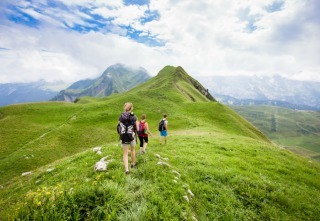 The most basic advice I can give about hiking is to go find a natural space and walk around. That’s it. It’s not sexy or particularly exciting, but it’s good enough.
The most basic advice I can give about hiking is to go find a natural space and walk around. That’s it. It’s not sexy or particularly exciting, but it’s good enough.
I do have some additional thoughts, though. If you want to get deeper, if you want to “upgrade” or “hack” your hiking, you’ll find today’s post useful. I’m going to offer some ideas on how to get the most out of your forays into wilderness.
I’m not going to discuss multi-day hikes/backpacking, which, truth be told, I’m not nearly as experienced with. This is strictly about day hikes—the kind everyone has time to do.
I’m also not going to discuss gear. It’s real easy (and fun) to geek out on all the awesome gadgets and gear you can buy for hiking, so I won’t spend much time there.
Let’s get to it:
1. When choosing a hike, avoid those with the most reviews.
When searching for new restaurants to try, I weigh the number of reviews more heavily than the number of stars they receive. Same for books and other products. A 4.5 star average across 2000 reviews is more convincing than a 5 star average across 20.
Not so with hikes. When I’m browsing Yelp or some other hiking review site for a hike to try, I avoid the ones with the most reviews. I expect and prepare for crowds at a good restaurant. Crowds can even enhance a restaurant’s atmosphere. I hike to escape the crowds.
2. Be smart.
Grok wasn’t some foolhardy hiker, heading off into the backcountry on a lark. Most extant hunter-gatherers are cautious. They travel with friends. They move along pre-determined paths. They know the land before they walk it.
It’s a lot like a lifelong shoe wearer running a marathon in Vibram FiveFingers. It’s gonna hurt, and and injury is probable. Having grown up in the cradle of civilization, you probably aren’t prepared to go it alone. Nature can be dangerous. It doesn’t have to be, but you’d better respect it.
Plan your route. Follow a path; trails are where they are for a good reason. Solo hikes are fine (some of my favorites have been just me), as long as you know what you’re doing and where you’re going.
3. Bring your phone.
Wait, what? Sisson, I thought I was hiking to escape the trappings of civilization. I hike to gaze at the wonders of mother nature, not thumb my way through my Twitter feed. You really blew it on this one.
Not so fast. Here’s how I use my phone on my hikes.
Take notes whenever inspiration strikes. Walking increases blood flow to the brain and improves cognitive performance, spending time in nature reduces stress and elicits spiritual, ecstatic experiences, so hiking can really get the creative juices flowing. I often do my best creative thinking out on the trail.
Writing. Believe it or not, I do a fair bit of “writing” while hiking. I’ll often dictate to the speech-to-text feature on the phone a big messy rough draft. When I get home, I edit (and edit, and edit some more; it’s a really rough draft). But the hike gets the story going.
Photography. Don’t view the world through the view finder or anything, but photos can be nice. Memories and photos can perpetuate each other. And yes, share away on social media. Make people envious. Make people feel bad about skipping out on the last five hikes. Make people want to get out there themselves. In fact, let’s make this a thing. I want you to take photos next time you’re out hiking and post to the social media app of your choice. Heck, tag me @MarksDailyApple on Instagram so I can see what you’re up to. Throw in the hashtag #GrokInTheWild, too.
Research. Is this wild bay leaf, or something similar but inedible? Whoa, is that poison oak? Having a phone (with reception) allows you to dig a little deeper into the hiking experience, avoid potential dangers, and uncover treasures.
And no, I don’t always take it along.
4. Hike unencumbered whenever possible.
On short hikes, don’t take food. Don’t wear a backpack. If it’s a short enough hike, don’t even take water.
I love to hike totally unencumbered. Save for whatever fits in my pockets, I prefer to leave it behind. If it’s a cool day or a short hike (1-4 miles), I’ll even leave the water behind.
This gives me more freedom to roam and explore. I can run if I want to. I can lift a rock or log or climb a tree. Mostly, I just like having my hands free as I walk. There’s nothing like gliding down a trail, light as a bird.
Hydration is important, so before you start hiking, drink 12 ounces of water with sea salt sprinkled in—and maybe a squeeze of lemon or lime juice.
5. Don’t let children stop you.
Parents, even of youngsters totally unable to self-ambulate: take your kids hiking. It’s not that hard. If pre-walking, strap them into a baby carrier or use a stroller (trail permitting). If barely walking, just go short and slow. Your mile hike might take an hour, but it’s worth it and you’re still out there.
Hiking soothes the crying babe. It provokes the sullen pre-teen into engagement with the world (despite their best attempts). It builds stamina walking up those hills, balance traversing that uneven ground, and instills a love and respect for the natural world.
Will babies “remember” it? Not consciously, but trust me. All those hours spent walking through beautiful natural settings imprint on their subconscious selves. They’ll be better, calmer, saner adults for their time in nature.
6. Lift heavy things.
The natural environment abounds with heavy objects. Stones and fallen logs of various sizes, shapes, and weights provide plenty of resistance. I suggest you take advantage.
Carry a heavy log in the zercher position. Do some squats and lunges.
Carry a log on either shoulder. Balance it so that you can carry it without hand support.
Do landmine exercises with a log. Place one end of a log securely against a tree, rock, or other surface. Pick up the other end and use it as a weight. I like the reverse lunge (only have the log in the front rack position, unless you’re somehow able to hold a log at your side with one hand).
Deadlift large rocks. Go lighter than you think, as the irregular shape and hand positioning will make it harder than deadlift the same weight on a barbell.
7. Play as you go with a partner.
Having a partner isn’t just safer. It exponentially increases the amount of fun you can have.
Every time you see a hawk/squirrel/fallen tree/mushroom/etc., deliver a pinch/slap/goose/elbow/tickle/wet willy/purple nurple/toss to the ground to the other person. Pick an object you’ll encounter throughout the hike, choose a punishment, and whoever sees the object first gets to enact the punishment. Repeat.
Play catch. Find a stone, and play catch the entire time. Go long and go short. Catch behind your back. Throw behind your back. Switch hands. Mix it up.
Carry a heavy stone or log together as far as you can. When you get tired, hand it off. Actually, hand it off before you get tired. Keep some in the tank so you can keep the handoffs going as long as possible. Vary your carrying method (right shoulder/left shoulder/zercher/overhead/etc.).
8. Incorporate formal exercise into the hike.
This is a great way to get a solid workout without realizing it.
Do a few pull-ups on every overhead branch you see.
Do walking lunges every five minutes.
Sprint up every other switch back you encounter.
Bear crawl for 40 yards every 10 minutes.
Stop and do max rep pushups every 10 minutes. Do dips instead if you can find a suitable place.
What else can you think of?
9. Climb.
Observe the verticality of the natural world. Look for trees that you can climb, and climb them.
Be safe, of course. Don’t climb anything you can’t climb down. Avoid branches thinner than your wrist. Avoid dead branches (and dead trees, for that matter).
Also check out rock formations you can scramble up. There’s nothing like a good scramble up some granite. Bouldering—climbing straight up using toe and handholds—is also fun but requires more training and know-how.
10. Slow down.
I’m no meditator. I’ve tried. I’ve read the literature. I know the benefits. It just doesn’t work for me.
But there are alternatives that get you to the same place, and hiking is one of mine.
So, when you hike, stay present and pay attention. Touch everything you see. Caress the bark and the leaves. Smell the flowers. Flip over a decaying log and watch the bugs scatter. One of my favorites to touch and see is the manzanita tree.
Hiking isn’t always about physical fitness. It’s a place to just be in the present moment, too.
11. Try hiking the highest peak in your area.
If my hike doesn’t have at least a bit of elevation gain, I feel cheated. It doesn’t even feel like a hike. Rather, it’s a walk.
Walks are fine. I love a good easy walk through a wilderness area. But I really, really love a good climb.
One thing I’ll do anytime I’m in a new area (and have enough time) is look around for the hike with the biggest elevation gain. There’s something gratifying about battling the most fundamental force in the known universe—gravity—and coming out on top.
I mean that literally: you’re actually on top. You can look down on the city below and know that you’re higher than every single person there.
Also, climbing is a great workout.
12. Ponder the trees.
Trees are crazy.
Depending on where you are, the trees might have been around to witness the rise and fall of Alexander the Great, the spread of Christendom, the construction of the Great Wall of China and Macchu Picchu, the dozens of generations of hunter-gatherers raising children and warring and loving and dying under its canopy. And these are living things. Not conscious like we know, but responsive to the environment and reactive to their peers, with whom they communicate via a subterranean fungal network.
13. Feel the trail’s history.
Imagine the original inhabitants padding along the same trail you’re on, seeing the same sunset you’re watching. What were they thinking? What did they dream about? What did they carry? Did they ever just go out to enjoy themselves on a hike?
Imagine the earliest explorers climbing the same ridge you just climbed. You see haze and skyscrapers off in the distance. They saw teeming wildness.
Imagine the conversations that have echoed through these trees and valleys, canyons and caves.
Imagine all the lovers sneaking off to rendezvous within the confines of that little nook in the rock wall ten feet up, maybe during a thunderstorm or to escape the brutal heat of summer. To how many conceptions did it bear witness?
Imagine the troops marching along your trail to die, or win, or do both.
14. Try brown space, blue space, not just green space.
Most of us think of forests when we think about hiking, but that isn’t the only way to do it. You can hike through deserts and scrublands (brown space), along the ocean (blue space), through grasslands, or even through a particularly impressive city park.
Not everyone has easy access to towering forests, and that’s okay.
Well, there you have it: my 14 tips for making the most of your hikes.
How do you like to hike? What tips would you add?
Let me know down below! Thanks for reading, everybody, and take care.
The post 14 Primal Tips for Better Hiking appeared first on Mark's Daily Apple.



Join Me Tomorrow for the FREE Autoimmune Revolution Summit
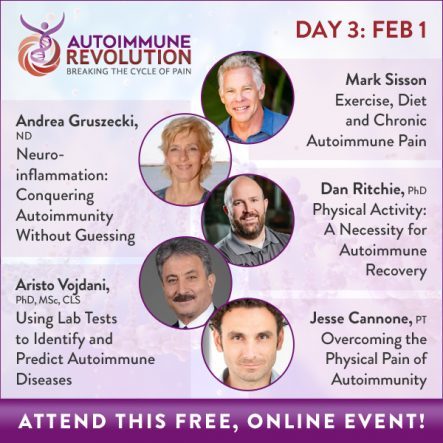 If you’ve been with me for more than a minute, you know I stand by the power of Primal practices to help prevent, and in many cases reverse, autoimmune pain. So, when my colleague Dr. Peter Osborne told me he was gathering together leading autoimmune experts and sharing their wisdom with the world, I jumped on board enthusiastically.
If you’ve been with me for more than a minute, you know I stand by the power of Primal practices to help prevent, and in many cases reverse, autoimmune pain. So, when my colleague Dr. Peter Osborne told me he was gathering together leading autoimmune experts and sharing their wisdom with the world, I jumped on board enthusiastically.
I’ll be a featured speaker for tomorrow, Day 3 of the FREE, online summit, which runs to Saturday, Feb. 6th. I’ll be discussing the intersection of diet, exercise and chronic autoimmune pain, specifically the foods to eliminate and overcome pain and the connection between diet and exercise injuries. (True to Primal form, I’ll also share tips for making exercise fun again!)
I’m one of 35 alternative health experts and functional medicine leaders together sharing nearly 30 hours of innovative and applicable advice on living well with autoimmune disorders. During the online summit, you’ll receive expert wisdom about breaking the cycle of autoimmune pain and medication dependency to achieve greater health and improved happiness.
Registration for the event is entirely FREE, and my talk with be available throughout the day tomorrow. However, I’d suggest taking in all the remaining talks if you can, particularly if you or a loved one live with an autoimmune condition.
You have the opportunity to purchase all 35 presentations, plus additional ecourses, guides, ebooks and other resources for $79 (that’s just over $2 a talk—not counting extras). Once you own the expert talks, you can listen to the audios on your computer or mobile device, read the complete transcripts, and share the information with family and friends.
I’m excited to be part of this event and hope you’ll join me.
See you at the summit, everyone!

The post Join Me Tomorrow for the FREE Autoimmune Revolution Summit appeared first on Mark's Daily Apple.



Mark Sisson's Blog
- Mark Sisson's profile
- 199 followers






